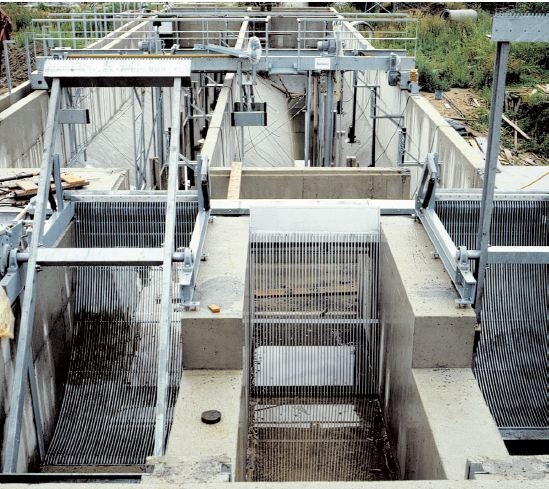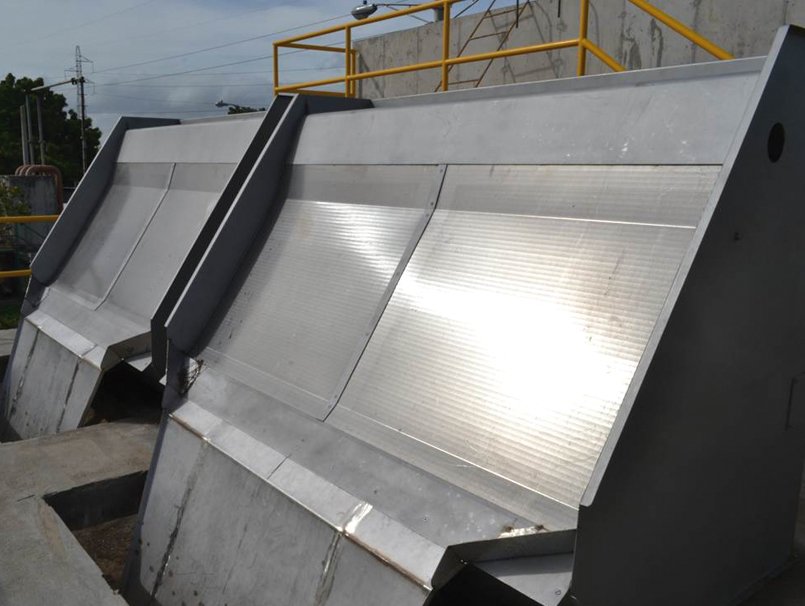
South Bay International Wastewater Treatment Plant
The South Bay International Wastewater Treatment Plant: Bridging Borders through Environmental Engineering
Introduction
Water, the essence of life, flows intricately through the landscapes of our planet, disregarding the borders delineated by human politics. Keeping this precious resource pure, especially as it traverses international boundaries, demands collaboration, innovation, and unwavering commitment. The South Bay International Wastewater Treatment Plant (SBIWTP) exemplifies this ethos.
Located near the U.S.-Mexico border, the SBIWTP stands as a testament to international cooperation and state-of-the-art environmental engineering. This article delves into the genesis, technology, challenges, and future of the plant, showcasing it as a vital linchpin in transboundary water management and environmental conservation.
Genesis of the South Bay International Wastewater Treatment Plant
Historical Context
The Tijuana River Basin, a key geographical feature for both the United States and Mexico, flows from the Mexican city of Tijuana into the Pacific Ocean at the southwestern edge of California. Historically, the river and its watershed have faced severe pollution challenges, primarily stemming from the rapid urbanization and industrialization of Tijuana during the latter half of the 20th century.
The problem escalated to crisis proportions in the 1970s and 1980s, with untreated or partially treated wastewater flowing into the United States, causing environmental degradation and public health concerns on both sides of the border. Beaches in Southern California, especially near Imperial Beach, were frequently closed due to pollution, which significantly impacted local communities and economies.
Bilateral Cooperation
Recognizing the need for a comprehensive and collaborative solution, the United States and Mexico initiated dialogues that culminated in the establishment of the SBIWTP. The diplomatic tenure saw the involvement of various stakeholders, including local, state, and federal agencies, non-governmental organizations (NGOs), and international bodies. An integral part of these negotiations was the International Boundary and Water Commission (IBWC), a binational entity tasked with addressing border water issues between the two nations.
The decision to construct the SBIWTP was formalized under Minute No. 283 of the IBWC in 1990, reflecting a shared commitment to mitigating pollution in the Tijuana River and safeguarding the environmental and public health interests of both countries.
Engineering and Technology: A Blend of Innovation and Practicality
Design Philosophy
The SBIWTP was designed with a clear objective: to treat the wastewater originating from Tijuana to a level that meets both United States and Mexican environmental standards before discharging it into the ocean. The location of the plant, near the Tijuana River’s mouth, ensures the greatest possible impact on reducing cross-border pollution.
Treatment Processes
The SBIWTP employs several advanced treatment processes to ensure that the effluent meets stringent environmental quality standards:
-
- Preliminary Treatment:
-
- Screening: Large debris and solids are removed from the incoming wastewater through mechanically raked screens.
-
- Grit Removal: Sand, grit, and other heavy particles are settled out in grit chambers.
-
- Preliminary Treatment:
-
- Primary Treatment:
-
- Primary Sedimentation: In this stage, the wastewater is held in large settling tanks where heavier organic solids settle as sludge. This process reduces the Biochemical Oxygen Demand (BOD) load, preparing the water for secondary treatment.
-
- Primary Treatment:
-
- Secondary Treatment:
-
- Activated Sludge Process: One of the core components of the SBIWTP is the activated sludge system, where microorganisms digest organic pollutants, converting them into carbon dioxide, water, and energy. After aeration, the mixed liquor is settled in secondary clarifiers, separating clean water from activated sludge.
-
- Biosolids Processing: The excess sludge from the secondary treatment is further treated, often through anaerobic digestion, to minimize pathogen content and reduce volume.
-
- Secondary Treatment:
-
- Tertiary Treatment:
-
- Disinfection: Chlorine or other disinfectants are added to eliminate any remaining pathogenic microorganisms before the water is discharged to the ocean.
-
- Advanced Treatment: In some cases, additional steps like filtration, nutrient removal, and dechlorination are employed to ensure that discharged water meets the highest quality standards.
-
- Tertiary Treatment:
-
- Effluent Disposal:
-
- The treated effluent is finally discharged through an ocean outfall pipeline, extending several miles offshore, ensuring that the highly treated water is diluted safely in the ocean currents.
-
- Effluent Disposal:
Capacity and Expansion
Initially designed to treat approximately 25 million gallons per day (MGD), the SBIWTP has undergone several upgrades to enhance its capacity and efficiency. The constantly growing urban population in Tijuana has necessitated periodic evaluations and expansions to ensure that the plant can handle increasing wastewater volumes.
Environmental and Social Impacts
Local Ecology and Public Health
The environmental benefits of the SBIWTP have been profound. By significantly reducing the levels of pollutants and pathogens in the Tijuana River, the plant has played a crucial role in re-establishing ecological balance in the region. Species of fish, plants, and birds that had been driven away by pollution began to return to their natural habitats.
Moreover, the plant’s operations have directly impacted public health, reducing the incidence of waterborne diseases and ensuring that local communities, particularly in Southern California, have access to cleaner beaches and recreational waters.
Economic Benefits
Improved water quality translates to economic benefits through increased tourism, better commercial fishing prospects, and a healthier environment attracting businesses and development opportunities to the region. Clean and safe beaches contribute significantly to the local economy, drawing visitors and bolstering hospitality-related businesses.
Transboundary Collaboration
SBIWTP stands as a symbol of successful international cooperation. It has fostered strong ties between the U.S. and Mexico, encouraging future collaborative efforts in various environmental and infrastructure projects. The shared commitment to maintaining the plant underscores the importance of binational stewardship of shared natural resources.
Challenges and Future Prospects
Maintenance and Operations
Operating a sophisticated wastewater treatment plant like the SBIWTP comes with its own set of challenges. Regular maintenance, technology upgrades, and skilled workforce requirements are essential to ensure uninterrupted and efficient functioning. Additionally, cross-border collaborations necessitate streamlined communication and mutual trust, ensuring that any emerging issues are promptly addressed.
Funding and Financial Sustainability
Securing adequate funding for ongoing operations and future expansions remains crucial. Both nations, along with international entities, play vital roles in providing the necessary financial resources. Ensuring financial sustainability involves balancing operational costs with revenue generated from wastewater treatment services and potentially exploring public-private partnerships.
Adapting to Urban Growth
Tijuana’s urban population continues to grow, placing increasing demands on the SBIWTP’s capacity. Future planning must account for expanding the plant’s capacity, while also integrating new technologies and processes to enhance treatment efficiency. Sustainable urban planning, water conservation measures, and improved wastewater collection systems in Tijuana are essential to complement the efforts of the treatment plant.
Climate Change Resilience
As climate change impacts become more pronounced, the SBIWTP faces additional challenges. Rising sea levels, increased storm frequency, and changing precipitation patterns can all affect the plant’s operations and infrastructure. Adaptation strategies, such as reinforcing protective barriers, upgrading stormwater management systems, and incorporating climate-resilient technologies, are critical to ensuring the plant’s resilience in the face of these challenges.
Towards a Sustainable Future
The South Bay International Wastewater Treatment Plant exemplifies how collaboration, engineering expertise, and a shared commitment to environmental stewardship can overcome significant challenges posed by transboundary water pollution. Its success story reminds us that the health of our water resources is a shared responsibility, transcending borders and requiring united efforts.
Educational and Community Engagement
Ensuring the continued success of the SBIWTP involves raising public awareness about its role and importance. Engaging local communities, schools, and universities through educational programs, workshops, and public tours can foster a sense of ownership and pride in maintaining this vital facility.
Innovation and Research
Ongoing research and innovation are crucial to advancing wastewater treatment technologies. Collaborations with academic institutions, research organizations, and private sector innovators can lead to the development of more efficient, cost-effective, and environmentally friendly treatment methods. Exploring the potential of renewable energy sources, such as solar and biogas, can further reduce the plant’s environmental footprint.
International Environmental Leadership
The SBIWTP serves as a beacon of international environmental leadership. By sharing its successes and lessons learned with other regions facing similar challenges, the plant can inspire and guide global efforts in transboundary water management. Platforms for knowledge exchange, international conferences, and partnerships with other countries can amplify the positive impact of the SBIWTP’s achievements.
Conclusion
The South Bay International Wastewater Treatment Plant stands as a remarkable achievement in international collaboration, engineering innovation, and environmental stewardship. Its success highlights the power of partnership and dedication to overcoming shared challenges. As we look to the future, the SBIWTP continues to be a vital asset in ensuring the health and sustainability of our water resources, bridging borders and demonstrating that together, we can create a cleaner, safer, and more resilient world.
By intertwining technological advancement with transnational cooperation, the South Bay International Wastewater Treatment Plant not only solves prevailing environmental problems but also lays the groundwork for a future where clean water is accessible and sustainable for all.

